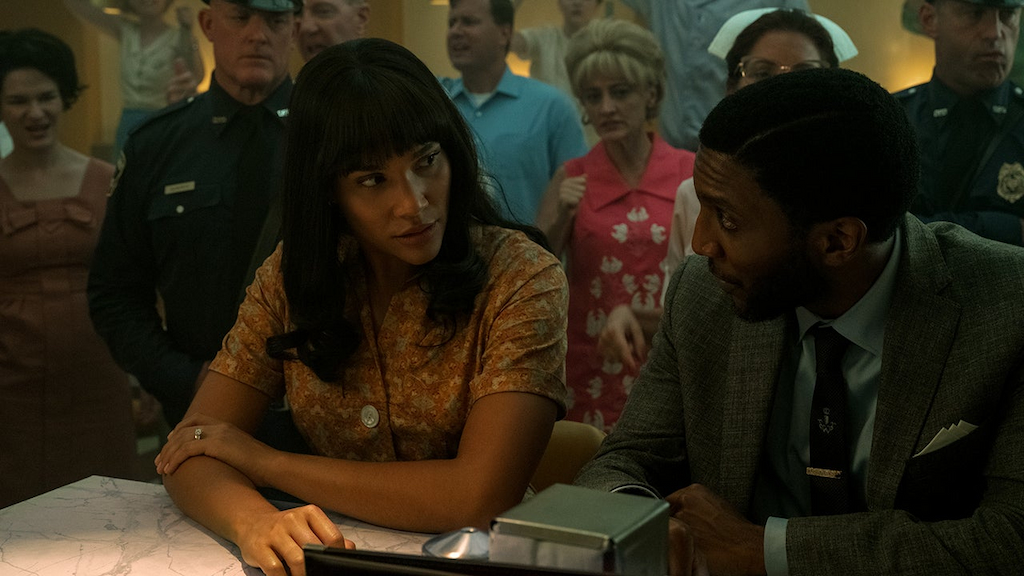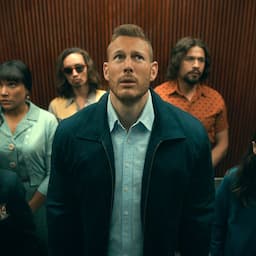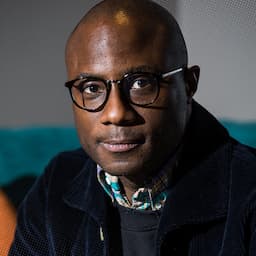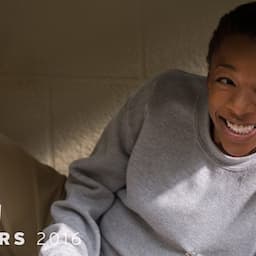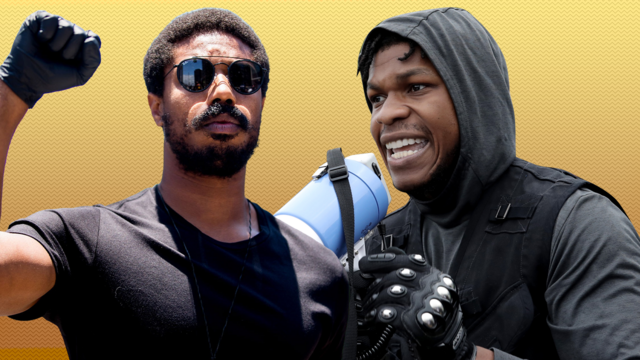Actress Emmy Raver-Lampman and director Stephen Surjik break down the episode about a civil rights protest and police brutality.
The Umbrella Academy, the comic series about a dysfunctional family of sibling superheroes who are forced to unite to prevent an apocalypse, returned to Netflix for another season of wild antics and adventures as the Hargreeves attempt to save the world again after being scattered through time in 1960s Dallas, Texas. For one family member, Allison (Emmy Raver-Lampman), this means being transported to an era of segregation, deep-rooted racism and the rise of the civil rights movement in America.
“We really wanted her to be in it and a part of it and have a voice in it. I think that was a huge part of her journey, using her voice in a way that she never really has before,” Raver-Lampman says in a conversation with ET of Allison’s journey in season 2, which sees her getting married to local rights activist Raymond Chestnut (Yusuf Gatewood), taking an active role in the movement in Dallas and participating in a sit-in protest of a segregated diner ahead of President John F. Kennedy’s arrival in the city in November 1963.
The protest, which takes place near the end of episode three, sees Allison, Raymond and other Black activists calmly taking seats at the counter, where they’re immediately confronted by the white patrons and employees who make it clear they are unwelcome. Tensions quickly rise as the protestors are covered in sugar and met with anger until one of the employees pushes a cup of hot coffee into Allison’s lap. Things quickly go from peaceful to chaotic as police start attacking the protestors inside the diner and outside on the streets, including Yusuf who is badly beaten by a cop with a baton.
“The whole day, my heart and my stomach were kind of in my throat,” Raver-Lampman says of filming those scenes. “But, you know, it doesn’t take much, especially being a Black woman and being a Black American, to get in the mindset and get into a place of understanding what that could actually feel like and be like to watch that happen.”
While filming was emotional for everyone on set, especially Raver-Lampman and Gatewood, the actress credits director Stephen Surjik for creating a safe environment. “It was of the utmost importance to him that I felt seen and respected and taken care of,” she says. “He made everybody feel heard. And after every single take, he would stop and ask the room, like, ‘Is everybody OK? Does somebody need to get moved? Does anybody need to excuse themselves?’ He was always checking in with everybody to make sure that nobody felt disrespected or slighted or uncomfortable or hurt.”
To help ensure that things never got out of hand, Surjik says he put a language restriction on what the extras could use while shouting at the protestors. He also made sure to stop filming if things ever got too heated on set. “I wanted to make sure we were authentic, but I didn’t want to propagate any other kind of racism in doing it,” he explains, adding that his main role on set was to protect the actors.
When it came to Raver-Lampman specifically, the two had long conversations about her experiences with racism, their anxieties over tackling these scenes and what they wanted to achieve with this episode. “I wanted to honor the historical relevance of this. And I want to make sure that we approached this in a way that doesn't diminish it,” he says.
They also had signals that they could use to let each other know when they needed to stop or take a pause, like when it came to the moment in the diner when one of the employees confronts her. He recalls pulling the actor aside after he wanted to add more dynamic to his role and interaction with Allison. Surjik reminded him they were there to serve Raver-Lampman’s performance and her story. “She’s the driver,” he says.
Surjik also had nothing but praise for Raver-Lampman, who he says “is a spectacular actress… it’s just a gift to watch her work.”
While initially nervous about Allison’s storyline this season, Raver-Lampman also saw it as another opportunity for representation, “depicting a really monumental part of American history, specifically African American history and the Black experience,” she says. “Finding out eventually that we were going to be doing a sit-in that would escalate to a riot, I was grateful for that because a lot of the brutality and the violence of the civil rights movement is not necessarily something we learn in school and it's not images that we see a lot of.”
Even though it was filmed last year, ahead of the current cultural reckonings the country is going through now, the actress said there’s no denying the parallels between what happened in the ‘60s and what’s happening today with the rise in the Black Lives Matter movement following George Floyd's death. “It’s undeniable that the two things are related. And that fight is the same fight and that struggle is still a struggle for millions of Black people and people of color across the country,” she says, adding, “we made this not in this moment that we're in now, so it's also very surreal that it's coming out now.”
Raver-Lampman also acknowledged the death of politician and civil rights activist John Lewis, who died three days before the actress spoke to ET by phone. “We were taking on something that was such a part of people's lives that are still alive today, and that are still currently fighting that fight and have dedicated their lives’ work to that fight,” she says. “John Lewis is a physical embodiment of that fight and that persistence and that strength. So I wanted to make sure [this episode] was dealt with care and properly researched and not something that we took lightly.”
RELATED CONTENT:
